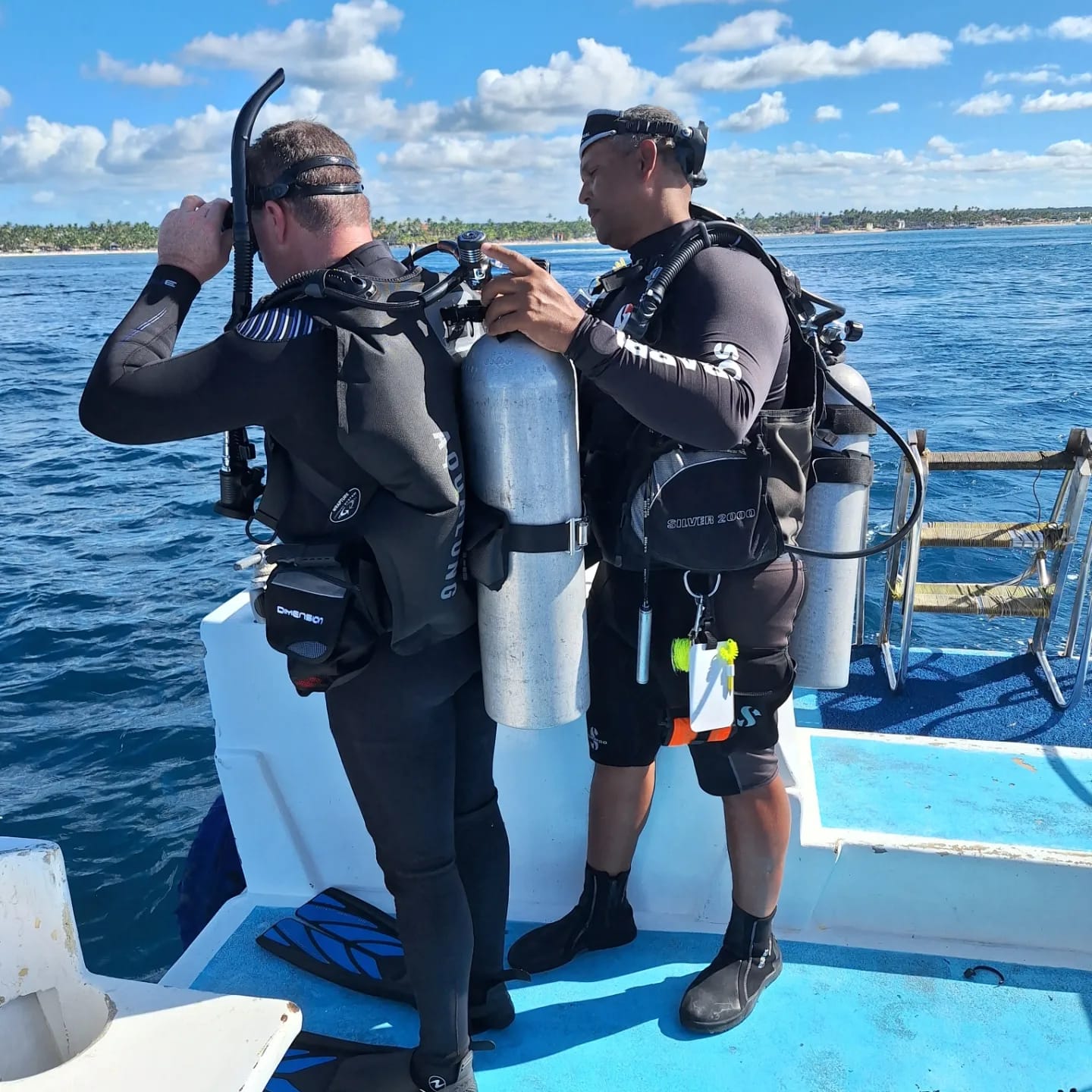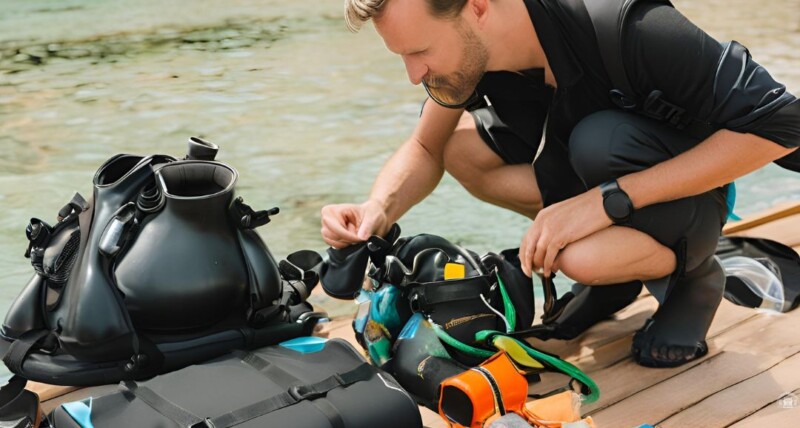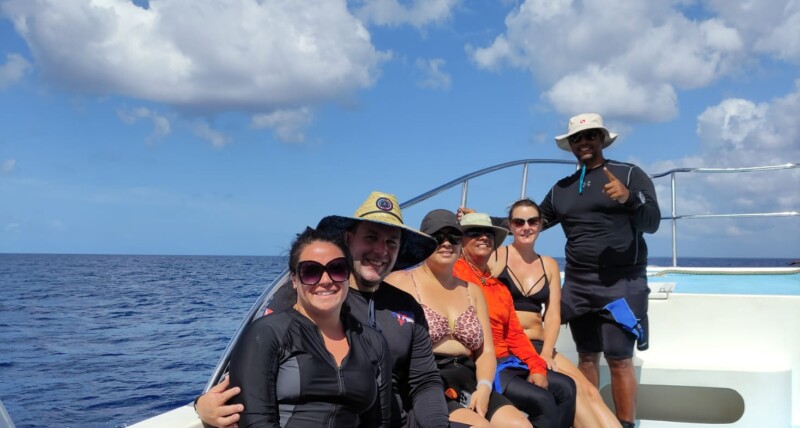How can I suck less gas while scuba diving?
Well, you’re in luck because if you scuba dive like a pissed-off dragon and you deplete your gas faster than you would like, I’ve got five tips and techniques to help you make your scuba dives last longer and Reduce Gas Consumption While Scuba Diving
Ladies and gentlemen, what’s going on, welcome to Private Dive Service My name’s Jonathan, i am gonna give you my top five tips for helping you enjoy longer dives by making your gas last longer.
Now you notice I’m gonna say gas a lot instead of air because the same tips and tricks apply regardless of what your breathing medium is. If you’re on nitrox or trimix, you know, until you get down to the real nitty-gritty and the deeper end of technical diving and you look at gas and it doesn’t matter.
Like that’s not what we’re talking about. We’re talking about recreational diving. What can you do to enjoy longer more enjoyable dives?
Understanding Breathing and Its Impact on Gas Consumption
As you’ve heard breathing together with buoyancy trim and propulsion make up the four core skills of scuba diving. It doesn’t matter if you’re diving fresh water or salt or you’re inside mount or back mount or open circuit or closed, whatever your diving profile is, all four of those skills need to be mastered in order for you to enjoy longer dives.
But the reason that a lot of people judge their performance as a scuba diver based on their breathing is because out of those four, breathing is the easiest one to measure because you’ve got your submersible pressure gauge. You’ve actually got real data that you can run the numbers, figure out how much gas you used and get a measurable performance index. It’s very hard to measure in a quantitative way your trim or your buoyancy or your propulsion but it’s very easy to measure your gas consumption.
So, once you know your sac rate and maybe you’ve calculated it for a few different dives and you’ve got some sort of benchmark data points to work from you’re going to want to work to reduce that number and the reason being that the lower your sac rate that means the slower your breathing, right, the less gas you’re passing in and out of your lungs which means your tank is going to last you longer and you’re going to enjoy longer dives.
If you find that you’re the first one out of your group that hits that term pressure or hits the reserve and has to surface and end the dive prematurely or if you find that your gas is holding you back from reaching your no-decompression limit at a given dive, then you’re having shorter dives than you could be having so I’ve got five tips for you. We’ve ignored the obvious ones like, yeah get some cardio in, yeah don’t smoke, obvious. These are more of the scuba-based tips.
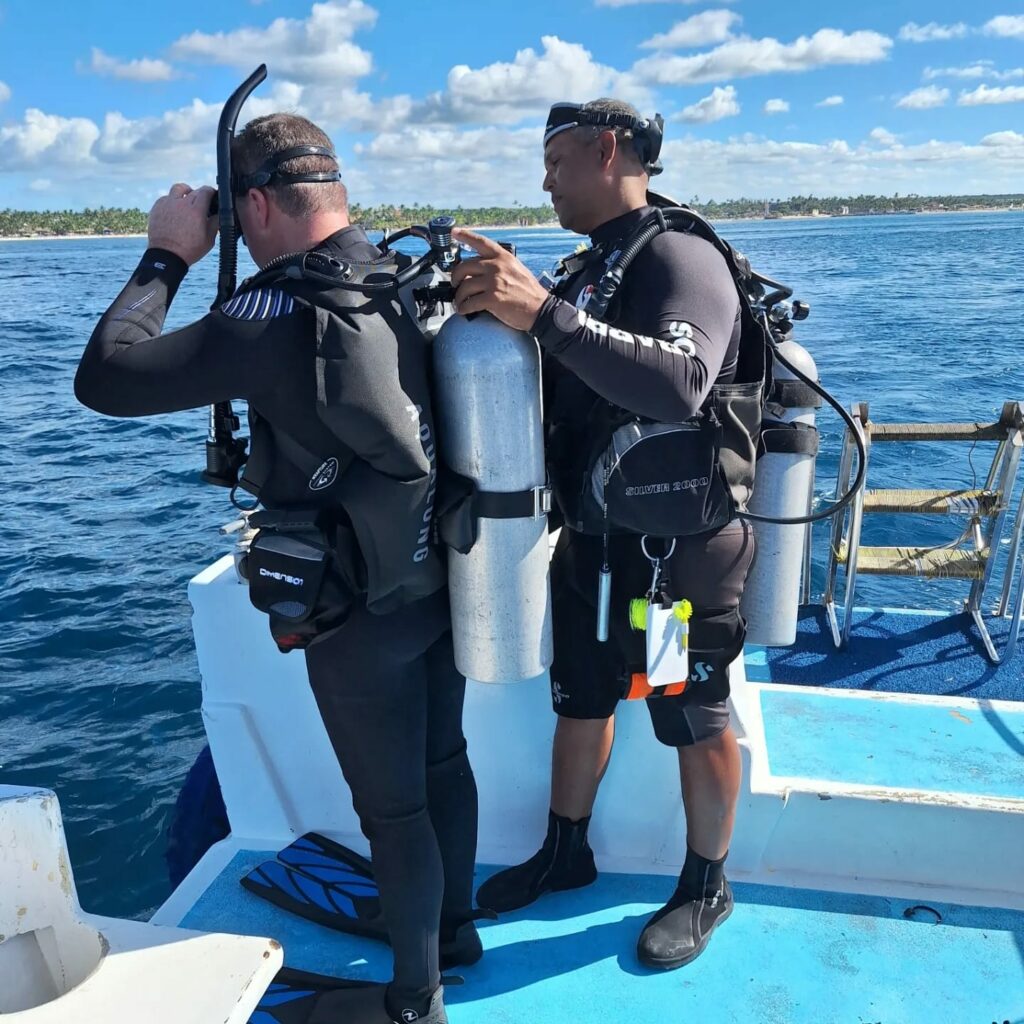
Tip 1: Reducing or Removing Stresses
Oh, that stress man, that is a killer, so, this is really like 20 points I can give you right now. Go to bed early the night before a dive, don’t drink too much alcohol the night before a dive, get the best sleep you possibly can, get up early and be organized, pack your gear the night before, check it in the morning, get to the dive site early so you’re not stressed and rushing, make sure you check in and ask all the questions you want, you’ve got the time for that.
Get on board nice and early, set your kit up, check your kit, and then double check it and then you’ve got time to actively participate in the briefings.
I can’t tell you how many times the last people to the boat are still setting their gear up while the captain’s giving the boat briefing and they’re not listening to the boat briefing which is going to cause them problems further down the line.
What we’re talking about is reducing stress here and if you reduce the stress, you’re going to be more relaxed and if you’re more relaxed you’re going to enjoy your diving more and you’re going to breathe slower and use less gas. It’s not rocket science but every single time the last person on the boat who hasn’t set their gear up and is panicking and rushing and stressing is always the first one back on board the boat because they’ve run out of gas.
Leave the work emails, don’t check work emails while you’re scuba diving, you’re scuba diving, what are you doing? The best thing about scuba diving is no phone calls, no emails. Oh, hi yeah, I was just wondering if you offered any kind of discounts on your scuba classes? Yeah, I can give you a discount on the course what part of the training would you like me to leave out? That’s what I love the most about it – live in the moment man, and never underestimate the effect that psychological stressors have on your physiology.
Tip 2: Minimize Your Weighting
Tom Petty said it best, “the waiting is the hardest part”. This is a really easy fix, here’s what I want you to do at the end of your next dive, your tank is at the lightest it’s going to be during that dive. Right at the very end just above the reserve pressure and your wetsuit in the shallowest part of the dive is going to be its most expanded so you’re the lightest, most buoyant you’ll be.
Now start ditching your weight in small increments one pound/ 500 grams. Fishing weights work really well for this and see if you can stay neutrally buoyant. If you can, if you’re handing weight over to your body and you’re staying neutrally buoyant at the safety stop you were overweighted my friend.
Now what’s the problem with that and how does it affect your breathing? If you are overweight, every kick you make you have to create more thrust to plow yourself through the water. In addition to that, you also need to add more air to your BCD which increases your volume which again means you have to work harder to kick through the water and both of those things mean you’re overexerting yourself and over exertion means you’re over breathing. So, you always want to dive with the minimum amount of weight and yes that has a significant effect on the amount of gas you consume.
Tip 3: Perfecting Your Buoyancy
Okay! So, we fixed your weighting, now we need to fix your buoyancy, and make no mistake about it, buoyancy is always a work in progress. It’s always a work in progress for me, you can always be better at it. But the biggest tip I can give you as a recreational diver is to switch the mentality from using your BCD as your primary buoyancy control device to using your lungs. If you use your lungs to control your buoyancy you’re using that gas for two purposes – control buoyancy and respiration.
If you’re one of those divers that’s constantly on their inflator hose, basically does the whole dive with that inflator in their hand putting gas in taking gas out putting gas in, that’s a lot of gas going to waste. That could be used for breathing and making your dives longer.
Look at your BCD as a “set it and forget it” item, you make a decent on a dive you put a little bit of gas in enough to become neutrally buoyant at the start of the dive and then you stay where you are, you’re neutrally buoyant. So, if I need to make adjustments I breathe in, I go up, I breathe out, I go down. Use that mentality and leave that inflator hose alone and I guarantee you your gas will last you longer.
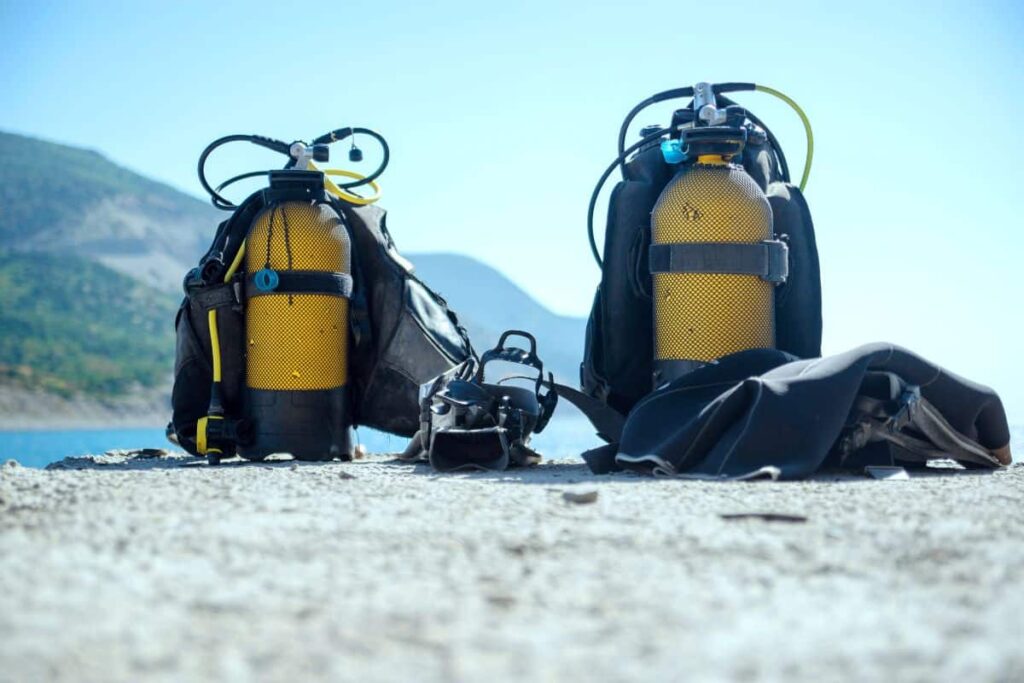
Tip 4: Reduce Drag
Just as it was with being overweight, if you are not streamlined you are creating drag which is resistance to propulsion and that means you have to kick harder to overcome that resistance and that means you’re going to have to breathe heavier.
Now we want to be as hydrodynamic in the water as possible and that’s what we call trim. Trim is twofold – number one, you need to be in a good body position. You can’t be flailing your arms out, you need to have your head in a nice neutral position and you need to make sure that when you kick you move in the direction that you’re intending to move in.
Second is, optimizing our gear to be as drag-free, if you will, as possible so that includes things like optimal hose routing, so we don’t have these big loops of hose in the water columns and that all of our accessories are tucked in and snug. Our gauge is tucked in and that we, you know, have the optimum fins for the profile that we’re doing, that our weight is evenly distributed.
All of these things apply to having good trim. I see divers week in, week out underwater, they look like the old junk lady from the Labyrinth and they’re always the first ones back on board the boat because they’re trying to plow a Christmas tree through the water.
Moving on, less drag equals less resistance which means less work when diving which means a lower rate of breathing which means longer dives for you.
Tip 5: Breath Control
Breathe correctly. Underwater there is one right way to breathe and many, many different wrong ways to breathe. If you’re down there taking short huffy breaths like a panicked gorilla or you’re down there chundering through your gas like a whale with allergies you’re doing it wrong.
So, Jonathan how should I breathe underwater? You should try to regulate the amount of time you spend inhaling with the amount of time you spend exhaling. There are very good reasons for this, but first how do you do that? What I want you to do on your next dive is practice breathing in for a count of four and out for a count of four and I want you to do that for the whole dive and if you find that you can do that nice equal breathe in, breathe out for a count of four in both directions without actually having to count to four each time and that, that’s just become your habit then move to a count of five and when you find yourself breathing in and out for five seconds or count five without having to do the actual counting move to six and when you find that becomes habit then go and take your instructor course.
Why do we want to balance our inhales with our exhales? Well very simply, carbon dioxide the mammalian breathing reflex is triggered by the build-up of carbon dioxide not our need for oxygen. It’s actually the build-up of our waste product that triggers us to breathe.
Now if you breathe in for an equal amount of time that you breathe out, you’re going to be cycling or flushing your lungs of carbon dioxide, less carbon dioxide in your lungs means less triggers for you to breathe which means you’re going to breathe in that nice relaxed consistent pattern the entire dive and use less gas.
Private Dive Service in the Dominican Republic
Overview
We are a team of professional divers behind Private Dive Services SRL company directed by Jonathan García as a CEO and with experience of more than 25 years in diving sector. Our Main headquarters is located in Punta Cana, Dominican Republic where we provide transportation, organization and expeditions to not just Punta Cana area but, the entire beautiful island of the Dominican Republic.
Our Mission
Our mission is to provide exceptional and customized diving experiences, focusing on safety, education, and the conservation of marine environments.
Safety Standards
Safety is our top priority. We adhere to stringent safety protocols and guidelines to ensure the well-being of our divers.
Custom Dive Packages
Beginners
For those new to diving, we offer introductory courses and guided dives to help you become comfortable underwater.
Advanced Divers
Experienced divers can enjoy more challenging dive sites and advanced courses to enhance their skills.
Specialty Dives
We offer specialty dives such as night diving, wreck diving, and underwater photography to cater to specific interests.

